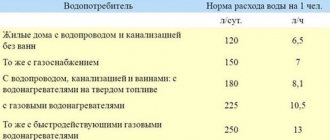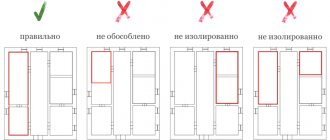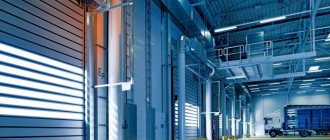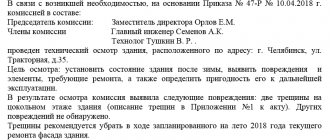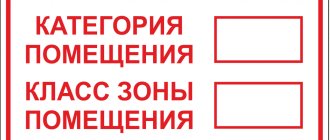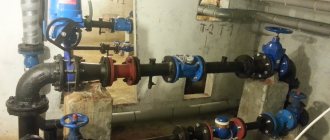SanPin requirements for production premises
Certain SanPiN requirements have been established for production premises or offices. If the temperature in a workplace (the standards are officially enshrined in laws) deviates from acceptable parameters, the manager, according to the rules, must limit the time an official spends at the workplace or take care of improving conditions.
SanPin
For example, an eight-hour standard working day is maintained only under conditions where the room temperature is no more than 28°C and no less than 20°C. Extra or missing degrees reduce the working day by 1 hour.
For this reason, special thermometers must be installed in each production or office premises at a height of approximately 1 m from the floor in order to monitor compliance with working conditions established at the official level. If the conditions do not meet the requirements, the employee must receive work with additional pay at an industrial establishment.
What responsibility does an employer bear for violation of labor protection?
According to the law, the employer undertakes to comply with the requirements of sanitary standards in relation to employees. This includes:
- organization of the production process;
- creation of jobs;
- compliance with the work and rest regime;
- creation of necessary working conditions.
A recorded violation of the temperature regime in the office by an employer may entail administrative liability, and in some cases, criminal liability.
In Ukraine, this process is regulated by Art. 6 and 13 of the Law on Labor Protection. For violating sanitary standards, citizens receive an administrative fine - from one to twelve minimum incomes, and officials - from six to twenty-five minimum incomes (tax-free). A temporary work ban or restriction on specific activities is possible at an enterprise.
According to Russian labor legislation, sanitary standards are regulated by Art. 212 of the Labor Code of the Russian Federation and Art. 209 Labor Code of the Russian Federation. An enterprise may be subject to an administrative fine of 10,000 to 20,000 rubles or a ban on work for up to 90 days may be imposed in accordance with Art. 6.3 of the Code of Administrative Offences.
In Belarus, liability is established by Article 9.17 of the Code of Administrative Offenses. For non-compliance with labor legislation, an official may be fined in the amount of 10 to 50 basic units (minimum wage), a legal entity - up to 300 basic units.
Minimum room temperature according to the Labor Code
According to the requirements of the Labor Code of the Russian Federation, the temperature in the office, according to sanitary standards, in winter should not fall below 20 ° C (minimum). If the standards have been violated, the employer is obliged to install an additional heater or reduce the number of working hours per week.
Lighting standards for an office workplace
In the Labor Code of the Russian Federation there are certain temporary norms (normal conditions), or rather their reductions when the room temperature is too low:
- 19 °C - 7-hour working day;
- 18 °C - the employee must be released after 6 hours in the office;
- 17 °C - 5 hours;
- 16 - 4 hours;
- 15 - 4 hours;
- 14 - 2 hours
For your information! Experts studying working conditions have found that a person is strictly prohibited from working at an ambient temperature below 13°C, since this is dangerous for the body. Vital functions of the body will be disrupted.
If the room temperature is low, the employee will get sick
What does an employee have the right to do if the temperature is outside the normal range?
1. Ask to use additional equipment for heating/cooling. For example, an air conditioner or a heater.
2. Demand a reduction in working hours in accordance with the law.
3. File a complaint with the relevant authorities:
- Labor Protection Inspectorate – Ukraine.
- Federal Service for Supervision of Consumer Rights Protection and Human Welfare (Rospotrebnadzor) – Russia.
- Department of State Labor Inspection - Belarus.
What temperature should the office be?
A special document on hygienic requirements for indoor climate was drawn up for office workers (this also applies to medical institutions and schools). By defending your rights, you can take advantage of them. There are sanitary standards that affect the well-being of the population. The law was adopted by the government back in 1999, however, the adopted and established requirements must be strictly observed by the manager for employees of office premises.
The width of the corridor according to fire standards and its length
If an employee is in the office for a standard 8 hours every day, then the employer must provide him with a comfortable temperature (this also applies to people working in shifts):
- for summer days - 23-25 °C;
- on cold days - 22-24 °C.
Note! According to SanPiN requirements, deviations from the accepted standard temperature in the office cannot exceed 1-2 degrees. If this occurs, employees should report the problem to their immediate department manager.
The law also contains information about indoor humidity, which is also of great importance for the human body. The indicator should be approximately 40%, but not exceed 60%. These are optimal working conditions.
Microclimate in office premises
Office air quality is one of the key issues affecting productivity and therefore has a direct bearing on the performance of any organization. Thus, the organization of ventilation and air conditioning systems is one of the most important indicators of the quality of office space and serves as a criterion that should be assessed among the first when considering options in the process of choosing office space.
Office premises are characterized by a long-term concentration of people with different individual characteristics and, accordingly, needs that ensure the highest labor productivity. Some people prefer cool rooms, others strive to be warm and react negatively to drafts.
A certain difficulty is also presented by the possible discrepancy between the performance of the ventilation system and the needs of the organization’s production process. The fact is that over time, the functional purpose of the room may change, which may lead to a discrepancy between the needs of the repurposed room and the capabilities of the ventilation and air conditioning system.
Modern buildings are often designed with ventilation systems that allow individual needs to be taken into account in terms of creating a microclimate for each workplace.
Taking into account modern requirements, a general ventilation system, supplemented with means for regulating microclimate parameters in workplaces, can be considered the optimal solution in terms of energy consumption and the quality of maintaining a given thermal regime.
Functional zoning of buildings, as the basis for the selection of architectural and engineering solutions, serves as a key condition that determines the parameters of microclimate formation systems. In the process of calculating the configuration and operational characteristics of the ventilation system, as well as when performing thermal engineering calculations of the building, factors such as glazing area, number of window openings, and their locations are taken into account. Of course, during redevelopment during the operation of the building and when repurposing the building, the characteristics of the engineering systems included in the original project must be taken into account. Otherwise, there is a risk of cooling or heating of the premises above the temperatures allowed by standards, as well as the appearance of convection currents, creating uncomfortable conditions for people in the office.
An important aspect of ensuring comfortable indoor conditions is the proper operation of ventilation and air conditioning systems. High-quality operation and maintenance are most critical for active ventilation systems that allow regulation of air flow speed and temperature. For example, if the flow rate is excessively high, people in the room not only experience acoustic discomfort, but also experience a change in temperature and the occurrence of drafts. This, as a rule, leads to the shutdown of supply units or forced ventilation, which, in turn, increases the load on the ventilation system and leads to increased operating costs.
The microclimate in office premises is a complex of meteorological conditions, including: temperature, relative humidity, the amount of air ions, air exchange, air speed, the content of solid particles (dust) in the air, etc. In accordance with the requirements of GOST 30494–96 “Residential buildings and public. “Indoor microclimate parameters” are considered optimal for the microclimate of residential and public premises in the warm season: air temperature 22–25°C, relative humidity 30–60%, air speed - no more than 0.25 m/s; in the cold season, these figures are 20–22°C, 30–45% and 0.1–0.15 m/s, respectively. In this case, the horizontal temperature difference from the windows to the opposite wall should not exceed 2°C, and vertically 1°C for each meter of room height.
One of the key factors in creating a comfortable microclimate in office premises is humidity. Humidity is considered in combination with ambient temperature to create a comfortable and safe environment. At temperatures that are optimal for people’s well-being, high air humidity does not have a particular negative effect on the human body, but low humidity (especially at high temperatures) has an adverse effect on general well-being, the condition of the eyes and mucous membranes, the upper respiratory tract and skin.
Also, comfortable indoor microclimate conditions are inextricably linked with local factors, such as convection or aerodynamic movements of air masses within the volumes of the building, the temperature of the floor surface and enclosing structures, and the difference in air temperature within the room vertically and horizontally.
In the practice of designing ventilation and air conditioning systems, the entire complex of factors is taken into account, constituting the initial conditions for calculating operational characteristics, the configuration of the equipment used and its operating modes. Thus, the most suitable premises for the purpose of locating an office from the point of view of ensuring a comfortable and safe microclimate in the workplace can be considered a premises that has not undergone repurposing and redevelopment, which guarantees the operation of the ventilation and air conditioning system in normal modes.
Thus, when renting office premises, it is advisable to check the compliance of the characteristics of the premises with the regulatory requirements of SanPiN 2.2.4.548-96 “Hygienic requirements for the microclimate of industrial premises” and GOST 30494-2011 “Residential and public buildings. Indoor microclimate parameters." In this case, you can be sure that the ventilation and air conditioning system in the building meets the requirements of comfort and safety.
R. Malova
What is meant by comfortable working conditions and optimal conditions?
Hygienic standards for working conditions
Any office employee must fulfill a list of established duties during the working day. And comfortable working conditions are an environment that does not interfere with this.
Optimal working conditions in an office or at an enterprise are a given climate in which an employee can work without being distracted by weather factors. In other words, a person should not be too cold in winter and too hot on summer days.
The employee will stop focusing on duties in hot or cold weather
The importance of office climate
For performing work duties during the working day, the employee receives a salary and is given leave. In turn, the manager receives his own profit. But if the microclimate in the room is disturbed and a person suffers from heat or cold, he will not be able to concentrate on performing his duties. This will result in his boss receiving poor quality work or missed schedules and deadlines.
What should an employee do if the employer does not comply with the temperature regime?
If the head of an organization does not care about the comfort of employees and does not create optimal working conditions, the employee should not endure this for fear of dismissal (according to the law, anyone can protect their rights). In this case, it is necessary to write a statement to the sanitary and epidemiological service after the boss, after two requests, does not respond to requests to create optimal conditions, that is, does not fulfill his direct duties.
As a result of this action, regulatory authorities will come to the organization, and if the claim is justified, the employer will be held administratively liable.
Note! In addition to the requirements to eliminate identified violations, the head of the structure will receive a fine.
What to do if it's cold in the office
In order to create comfortable working conditions for employees in winter, the employer is obliged to additionally purchase heaters for the office if the temperature regime according to SanPiN is violated.
Another way out of this situation is to invite workers who will check the pipeline through which hot water for heating flows. Perhaps the pipes were clogged, and therefore the room was poorly heated.
A worker clears a clogged pipe
Ventilation of premises: SanPiN standards
If the office gets too hot in the summer, the employer needs to purchase fans or install a split system in the room. But at the same time, it is necessary to ensure that the cooled air of a working air conditioner does not fall directly on a person, otherwise there is a risk that he will get sick and will have to pay sick leave, and not a fine for violating SanPin standards.
Important! Ventilating rooms and installing high-quality ventilation is another way to lower the temperature, but not the most effective.
Solving the problem of ventilation in the office
Often the ventilation problem is solved by installing an air conditioner. However, it is important to remember that the air conditioner only regulates the temperature of the atmosphere inside the room, but does not supply fresh air to the room.
You can organize convenient and functional ventilation in the office with the help of several breathers, which will ensure an uninterrupted supply of fresh air, clean it of dust, allergens and even the smallest harmful particles and heat it to the selected temperature. In this case, the air outflow remains the responsibility of the standard hood, and the design itself is organically included in the finished design and does not require additional repair work.
The MagicAir system will help make your office microclimate smarter. The base station monitors in real time all readings of the main parameters of the atmosphere - temperature, humidity and carbon dioxide levels. Thanks to the base station, the operation of all breathers can be controlled from a single web interface or application on a smartphone and the desired climate parameters can be set, which the system will automatically maintain.
Bathrooms, high-traffic lobbies, reception rooms and smoking rooms should be equipped with a separate hood or air purification system.
AS THE SMART CLIMATE SYSTEM DEVELOPES, THE BASE STATION WILL BE ABLE TO CONTROL AIR CONDITIONERS AND HUMIDIFIERS, AND THE SYSTEM ITSELF WILL DEVELOP, PROVIDING NEW OPPORTUNITIES FOR CREATING AND MAINTAINING A COMFORTABLE ATMOSPHERE. LET YOUR OFFICE BREATHE FREELY AND WORK PRODUCTIVELY!
Air conditioning - enemy or friend
Experts say that an air conditioner can quickly and efficiently cool a room, but at the same time it negatively affects a person’s health if he is constantly exposed to a stream of cold air (for the same reason, installing a cooling device in educational institutions is not recommended, since a student may catch a cold) .
Therefore, when turning on the air conditioner, the employer must make sure that no employee is directly exposed to the air coming from the installed split system (in this case, it is better to limit ventilation). Otherwise, you will have to pay sick leave in the near future.
Why is the microclimate and temperature in the office so important?
Temperature and microclimate have a very strong effect on a person’s performance and well-being. Reduced or increased air temperature, which has a long-term effect on a working person, not only negatively affects human health, but also greatly reduces the productivity of his work. People working in office spaces perform a wide variety of activities, most of which require being in one specific position for an extended period. This is mainly a sedentary and sitting position:
- Making decisions.
- Communication with customers.
- Paperwork.
- Computer work and other similar professions.
Physical inactivity and mental work do not go well together with the uncomfortable air temperature in an office-type room.
After conducting many experiments, researchers found that even minor deviations in air temperature have such a strong impact on the efficiency of work in the office that if it is impossible to provide the required microclimate, it makes sense to shorten the working day.
It is very important to ensure appropriate temperature conditions in the office. This is the responsibility of the employer under the law, regardless of the level of subordination and form of ownership of the organization.

